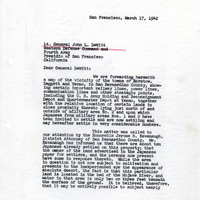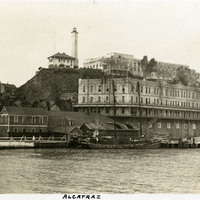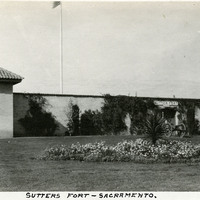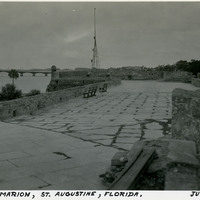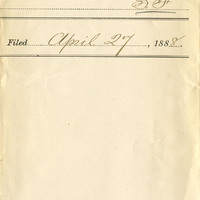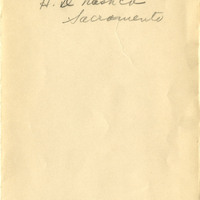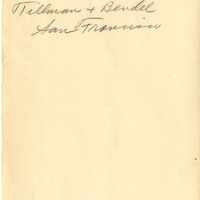Search All Items
- Filters:
- Type
- Image 3607
- Still Image 935
- Text 401
- Text 19
- Image of the California Census from the records of the office of the California Secretary of State 1
- Language
- English 4940
- Spanish 26
- ENGLISH 2
- English 1
- census_013 1
- contra_costa_schedule_1_volume_1 1
Search Results 4461 to 4470 of 5003
-
Correspondence from Earl Warren (by Warren Olney) to John L. DeWitt regarding strategic military points in the vicinity of San Bernardino County
Date: March 17, 1942
-
Caption: "Alcatraz," c. 1920. Image of lighthouse, main prison building (at top of hill), residences, and wharf facilities at Alcatraz Island prior to its designation as a federal penitentiary in 1934. Built in 1859 by the U.S. Army for coastal defense purposes, the fort at Alcatraz began serving as a prison in 1861. It ceased function as a defense fortification and became the Pacific Branch of the U.S. Military Prison in 1907. Over the next two decades the facilities on the island were modified and modernized.
Date: 1920
-
Caption: "Sutters [sic] Fort - Sacramento," c. 1920, shows a gun tower at Sutter's Fort, and a gate bracketed by two cannons. John Sutter established the fort in 1839, calling it New Helvetia. After the discovery of gold at one of Sutter's mills (at Coloma, on the American River), almost all of the fort's inhabitants left for the gold fields in the foothills. The fort deteriorated until being restored from 1891-1893. The Native Sons of the Golden West were influential in the restoration. The fort is now the site of a State Historic Park. See also 96-07-08-alb05-117 and 118.
Date: 1920
-
Caption: "Fort Marion, St. Augustine, Florida. July 10, 1934." Walkway atop what appears to be the ramparts of the Castillo de San Marcos (Castle of Saint Mark). The core structures of this coastal defense fort were completed by Spanish forces in 1695. Numerous additions, renovations, and repairs have occurred since that time. When Spain ceded Florida to the U.S. in 1821, the Castillo was designated a U.S. Army base and renamed Fort Marion, in honor of Frances Marion (also known as the Swamp Fox, Marion was an American Revolutionary War hero known for his guerilla war tactics). The fort was deactivated in 1933, and turned over to the National Park Service.
Date: 7/10/1934


